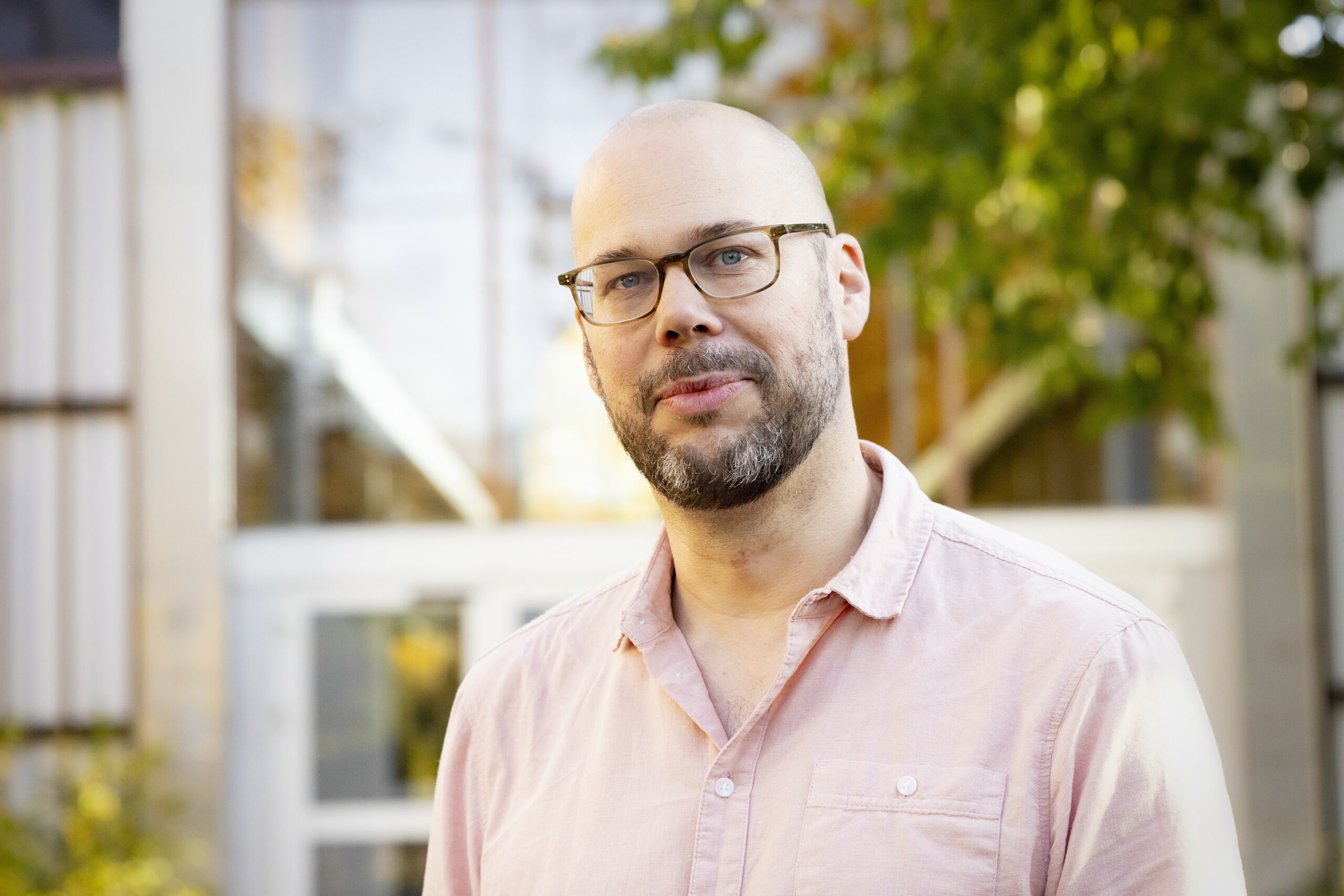This article has been translated with DeepL.
Biogas new business for farmers
- Published: 16 Apr 2020,
- 12:00 AM
- Updated: 16 Apr 2020,
- 12:31 PM

The following text was also published in Entré No 1, 2020:
Biogas creates added value for society and the environment, and many farmers want to become more sustainable. But they are hampered by insufficient market demand for sustainable values. Niklas Karlsson has investigated how profitability can be improved for farms investing in biogas.
Biogas is a fully renewable fuel used to produce heat and electricity or as vehicle gas. It is part of a circular economy where every resource is used as efficiently as possible. With the right on-farm facilities, farmers can produce biogas from manure and waste to become self-sufficient.
– If you produce more than you need, you can sell it to the market. Typical customers are municipalities and energy companies. Private individuals with biogas cars are also potential customers,” says Niklas Karlsson, who has a PhD from Halmstad University.
But today, only about 40 farmers in Sweden produce biogas.
– This is a shame, given the benefits that the company, society and the environment can gain from more sustainable farm production.
The main value of biogas is its contribution to a more sustainable society – a value that the market is not yet ready to pay for. Therefore, production risks becoming an unprofitable business.
Niklas Karlsson has investigated how farmers can achieve profitability with their biogas production. The research focuses on the business model and how it can become more sustainable through processes that drive innovation.
– For more farmers to want to contribute environmental and societal value, we need to find out how to make it a priority for them. We also need to look at how farm businesses can create economic value through their business models.
As a first step in the research, he and some colleagues studied a network of biogas producers in Dalsland. They were interested in how farmers had managed to make their production profitable.
– Cooperation and a multi-year customer guarantee proved to be key success factors.
The four farmers in the network each have their own farm production but work together and sell biogas to the energy company in a nearby municipality. The company is their largest customer.
– Having a secure outlet through the municipal energy company’s commitment to buy all biogas over a five-year period was crucial for them to feel confident about investing,” says Niklas Karlsson.
He has also studied a similar network in Halland. It also consists of a cooperative of farmers, whose ambition is to produce biogas together.
– But they found no customers willing to make a long-term investment in biogas. Unfortunately, this is a common picture. Potential customers, such as municipalities and energy companies, often focus on how the product can give them the fastest possible return. Not on the long-term added value of the deal.
At the same time, there are stakeholders who are ready to take a longer-term view, who want to shift from a linear business model to a more sustainable and circular business model concept.
– But everyone has to be involved. It is not enough for an individual farmer to think that green is good. The market must demand sustainable products and all stakeholders, such as municipalities, anaerobic digestion suppliers and retailers, must contribute. It is a joint project.
When Hallandslantbrukarna failed to make progress in their biogas initiative, Karlsson and his colleagues decided to bring an innovation perspective to the farmers’ current business models. The innovation process that was initiated focuses on how to change to create more sustainable value in the context of the company’s various activities. Among other things, the researchers wanted to explore how farmers could act differently to attract customers.
– “The thesis shows that in the process of moving towards a more sustainable business model, there are three main phases that the company goes through,” he explains.
The initial phase, prephase, examines the factors and conditions that motivate the company to initiate an innovation process. That is, what is it that makes us need to change something?
– In this case, it was because demand is not the best and the pricing of biogas is not satisfactory. Questions that can be asked at an early stage are: Can we market ourselves differently? Are there other types of customers that we have not considered?
Based on such questions, attempts are made to find new entry points into the market. In the next phase, the ongoing phase, activities are carried out that facilitate the understanding of the company’s existing business model and also support idea generation and business modeling in a sustainable direction.
– It maps the current business model and looks at how it can be changed and adapted to create sustainable value. We used the Flourishing Business Canvas tool, which develops business models with a focus on economic, social and environmental sustainability.
In the final phase of the model, the postphase, sustainable business model prototypes are developed with the aim of increasing the company’s profitability based on the desire to solve a sustainability problem. Niklas Karlsson emphasizes the importance of interacting with the company’s stakeholders at all stages and keeping their interests in mind.
The framework he presents in his doctoral thesis is derived from biogas production at farm level. But Karlsson hopes that small businesses in other sectors can also be inspired to create more sustainable value.
– A small company that wants to change its business model can be helped by this framework. I am sure that companies can make money by solving environmental or social problems.
Niklas Karlsson refers to organic food and how small that market was initially.
– Today, many customers are willing to pay more for organic milk, for example, because they see the environmental value of buying organic. This is where I hope we will get to with biogas as well.
It is possible to find business arrangements between producers and stakeholders where the value of sustainability is priced in dollars and cents. But it requires clear and strong cooperation between stakeholders to make it happen. According to Niklas Karlsson, there may be points in initially keeping the cost of biogas down to boost demand.
– But this requires the state to add the difference, otherwise biogas producers will not survive. The public and private sectors need to go hand in hand in this, to make the market make more sustainable choices.
Contact niklas.karlsson@hh.se
How to make sustainability profitable
In his research, Niklas Karlsson has identified five conditions for creating profitability by implementing more sustainable business models.
– Have the philosophy that your company can contribute to the sustainable development of society.
– See sustainability as a value in itself. It should be valued in dollars and cents, just like any other product or service.
– Establish a broad network with both public and private actors.
– Work with customers and stakeholders towards a common goal.
– Be patient – investing now will pay off later.———–



